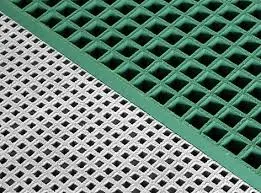
-
 Afrikaans
Afrikaans -
 Albanian
Albanian -
 Amharic
Amharic -
 Arabic
Arabic -
 Armenian
Armenian -
 Azerbaijani
Azerbaijani -
 Basque
Basque -
 Belarusian
Belarusian -
 Bengali
Bengali -
 Bosnian
Bosnian -
 Bulgarian
Bulgarian -
 Catalan
Catalan -
 Cebuano
Cebuano -
 China
China -
 China (Taiwan)
China (Taiwan) -
 Corsican
Corsican -
 Croatian
Croatian -
 Czech
Czech -
 Danish
Danish -
 Dutch
Dutch -
 English
English -
 Esperanto
Esperanto -
 Estonian
Estonian -
 Finnish
Finnish -
 French
French -
 Frisian
Frisian -
 Galician
Galician -
 Georgian
Georgian -
 German
German -
 Greek
Greek -
 Gujarati
Gujarati -
 Haitian Creole
Haitian Creole -
 hausa
hausa -
 hawaiian
hawaiian -
 Hebrew
Hebrew -
 Hindi
Hindi -
 Miao
Miao -
 Hungarian
Hungarian -
 Icelandic
Icelandic -
 igbo
igbo -
 Indonesian
Indonesian -
 irish
irish -
 Italian
Italian -
 Japanese
Japanese -
 Javanese
Javanese -
 Kannada
Kannada -
 kazakh
kazakh -
 Khmer
Khmer -
 Rwandese
Rwandese -
 Korean
Korean -
 Kurdish
Kurdish -
 Kyrgyz
Kyrgyz -
 Lao
Lao -
 Latin
Latin -
 Latvian
Latvian -
 Lithuanian
Lithuanian -
 Luxembourgish
Luxembourgish -
 Macedonian
Macedonian -
 Malgashi
Malgashi -
 Malay
Malay -
 Malayalam
Malayalam -
 Maltese
Maltese -
 Maori
Maori -
 Marathi
Marathi -
 Mongolian
Mongolian -
 Myanmar
Myanmar -
 Nepali
Nepali -
 Norwegian
Norwegian -
 Norwegian
Norwegian -
 Occitan
Occitan -
 Pashto
Pashto -
 Persian
Persian -
 Polish
Polish -
 Portuguese
Portuguese -
 Punjabi
Punjabi -
 Romanian
Romanian -
 Russian
Russian -
 Samoan
Samoan -
 Scottish Gaelic
Scottish Gaelic -
 Serbian
Serbian -
 Sesotho
Sesotho -
 Shona
Shona -
 Sindhi
Sindhi -
 Sinhala
Sinhala -
 Slovak
Slovak -
 Slovenian
Slovenian -
 Somali
Somali -
 Spanish
Spanish -
 Sundanese
Sundanese -
 Swahili
Swahili -
 Swedish
Swedish -
 Tagalog
Tagalog -
 Tajik
Tajik -
 Tamil
Tamil -
 Tatar
Tatar -
 Telugu
Telugu -
 Thai
Thai -
 Turkish
Turkish -
 Turkmen
Turkmen -
 Ukrainian
Ukrainian -
 Urdu
Urdu -
 Uighur
Uighur -
 Uzbek
Uzbek -
 Vietnamese
Vietnamese -
 Welsh
Welsh -
 Bantu
Bantu -
 Yiddish
Yiddish -
 Yoruba
Yoruba -
 Zulu
Zulu
fiberglass dual lamination
The Benefits and Applications of Fiberglass Dual Lamination
Fiberglass dual lamination is an innovative technique that combines two layers of fiberglass with a resin system to enhance the properties of the material, resulting in a product that boasts improved durability, corrosion resistance, and overall structural integrity. This method is becoming increasingly popular across various industries, including construction, marine, automotive, and manufacturing.
One of the primary benefits of fiberglass dual lamination is its notable strength-to-weight ratio. It offers high tensile strength without the added weight typical of traditional materials like steel or aluminum. This characteristic makes it an excellent choice for applications where minimizing weight is crucial without sacrificing performance. For instance, in the aerospace industry, lightweight composite materials improve fuel efficiency and performance.
In addition to its remarkable strength, fiberglass dual lamination provides exceptional resistance to environmental factors
. The layered structure effectively protects against moisture, chemicals, and UV radiation, making it suitable for outdoor applications, such as roofing materials and marine vessels. The longevity of fiberglass in harsh conditions reduces maintenance costs and extends the lifespan of the product, providing a sustainable option for manufacturers and consumers alike.fiberglass dual lamination

The dual lamination process also allows for customization in the type of resin used, enabling the material to meet specific requirements of various applications. For example, different resin formulations can improve flexibility, impact resistance, or thermal stability, catering to the unique needs of each project. This versatility makes fiberglass dual lamination appealing for a wide range of products, from automotive components to construction materials and beyond.
Another significant advantage is the aesthetic potential of fiberglass dual lamination. Manufacturers can incorporate various colors and finishes into the lamination process, resulting in visually appealing products that do not compromise on functionality. This quality makes it an attractive choice for consumer goods where appearance is as crucial as performance, such as furniture or ornamental features in architecture.
Moreover, the sustainability of fiberglass materials is gaining traction. With the increased focus on eco-friendly practices, many manufacturers are now employing recycled fiberglass in their dual lamination processes. This not only reduces waste but also lessens the environmental footprint associated with the production of new materials.
In conclusion, fiberglass dual lamination represents a significant advancement in material science, offering a range of benefits that cater to diverse industries. Its strength, resistance to environmental factors, customization potential, aesthetic appeal, and sustainability make it a compelling choice for modern applications. As technology continues to evolve, it is likely that fiberglass dual lamination will play an even more prominent role in the development of innovative products that meet the demands of the 21st century.









